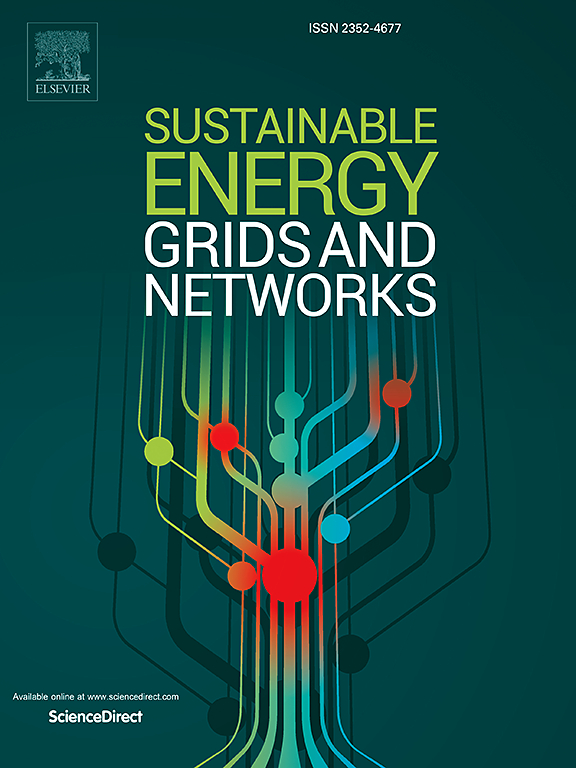一个可扩展和灵活的解决方案,以评估光伏分布式发电系统在电网中的集成效果
IF 5.6
2区 工程技术
Q2 ENERGY & FUELS
引用次数: 0
摘要
本研究介绍了一种新的方法来评估城市能源系统(UES)中的分布式光伏(PV)发电系统在基础设施层面上通过产生合成电网对配电网的影响。该方法集成了基于地理信息系统(GIS)的程序、模拟技术和能源模型,为分析高时空分辨率的电力流动提供了一个全面的工具。该研究强调了局部能源共享和形成能源社区的潜力。适应性强的平台支持运营和规划活动,为各种城市环境提供详细的分析。该方法为识别和减轻分布式光伏系统带来的挑战提供了有价值的工具,例如反向潮流,线路拥堵和过电压问题。以都灵市为例进行了案例研究,其中创建并分析了特定城市区域的综合网络。这项详细的检查揭示了由光伏(PV)电力模拟集成引发的关键网络漏洞,突出了需要注意的具体问题,需要有效解决。此外,本研究还探讨了提高分布式可再生能源网络弹性和效率的潜在干预措施。所提出的方法可用于能源社区、配电系统运营商和其他利益相关者来评估不同的情景、测试不同的聚合,并设计有效的控制策略,以确保配电网的稳定性和可靠性。本文章由计算机程序翻译,如有差异,请以英文原文为准。
A scalable and flexible solution to evaluate the effects of the integration of photovoltaic distributed generation systems within the electrical grid
This study introduces a novel methodological approach for evaluating the impacts of distributed photovoltaic (PV) generation systems within Urban Energy Systems (UES) on the distribution grid at an infrastructural level by generating synthetic electricity networks. The methodology integrates Geographic Information System (GIS)-based procedures, simulation techniques, and energy models to provide a comprehensive tool for analyzing electricity power flows at a high spatio-temporal resolution.
The study emphasizes the potential for localized energy sharing and the formation of Energy Communities. The adaptable platform supports operational and planning activities, offering detailed analyses for various urban settings. The methodology provides a valuable tool for identifying and mitigating the challenges posed by distributed PV systems, such as reverse power flow, line congestion, and over-voltage problems.
A case study focusing on the city of Turin was conducted, wherein a synthetic network of a specific urban area was created and analyzed. This detailed examination revealed critical network vulnerabilities triggered by the simulated integration of photovoltaic (PV) power, highlighting specific points that require attention to be effectively addressed. Furthermore, the study explores potential interventions to enhance the network’s resilience and efficiency in accommodating distributed renewable energy sources.
The proposed methodology can be used by Energy Communities, Distribution System Operators, and other stakeholders to evaluate different scenarios, test different aggregations, and design effective control strategies to ensure the stability and reliability of the distribution grid.
求助全文
通过发布文献求助,成功后即可免费获取论文全文。
去求助
来源期刊

Sustainable Energy Grids & Networks
Energy-Energy Engineering and Power Technology
CiteScore
7.90
自引率
13.00%
发文量
206
审稿时长
49 days
期刊介绍:
Sustainable Energy, Grids and Networks (SEGAN)is an international peer-reviewed publication for theoretical and applied research dealing with energy, information grids and power networks, including smart grids from super to micro grid scales. SEGAN welcomes papers describing fundamental advances in mathematical, statistical or computational methods with application to power and energy systems, as well as papers on applications, computation and modeling in the areas of electrical and energy systems with coupled information and communication technologies.
 求助内容:
求助内容: 应助结果提醒方式:
应助结果提醒方式:


